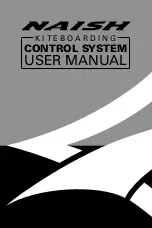
1
AROLLA 2 XXS, AROLLA 2 XS, AROLLA 2 S & AROLLA 2 M
Content
General information ................................................................................................................... 2
Required piloting skills .............................................................................................................. 2
General remarks about paragliding ............................................................................................ 2
Sectional drawing of the AROLLA 2 ........................................................................................ 3
Plan of the lines.......................................................................................................................... 4
Drawing of the risers.................................................................................................................. 5
Technical date and information.................................................................................................. 6
Limits of use.......................................................................................................................... 7
Operating the AROLLA 2.......................................................................................................... 7
Preflight check of the paraglider ........................................................................................... 7
Take-off ................................................................................................................................. 7
Landind.................................................................................................................................. 8
Turning .................................................................................................................................. 8
Raped Descent Techniques ........................................................................................................ 8
Big Ears ................................................................................................................................. 8
Spiral dive.............................................................................................................................. 9
B-line Stall............................................................................................................................. 9
Performances & Use of Brakes................................................................................................ 10
Use of the Speed Barr .............................................................................................................. 10
Asymetric or Frontal Collapses................................................................................................ 10
Full Stall................................................................................................................................... 11
Steering without brakes............................................................................................................ 11
Special Steering........................................................................................................................ 11
Comments on Testing Procedures............................................................................................ 12
Harness Adjustment ................................................................................................................. 12
Advice on Maintenance ........................................................................................................... 12
Storage and Maintenance ......................................................................................................... 13
Repairs ..................................................................................................................................... 13
Paragliding and nature conservation ........................................................................................ 13
Checks ................................................................................................................................. 14
Checks before Delivery ....................................................................................................... 14
Periodic Checks and Repairs.................................................................................................... 14
Recycling ................................................................................................................................. 14
Guarantee ................................................................................................................................. 14
Summary of Contents for AROLLA 2
Page 3: ...3 Sectional drawing of the AROLLA 2 ...
Page 4: ...4 Plan of the lines ...
Page 5: ...5 Drawing of the risers ...





























